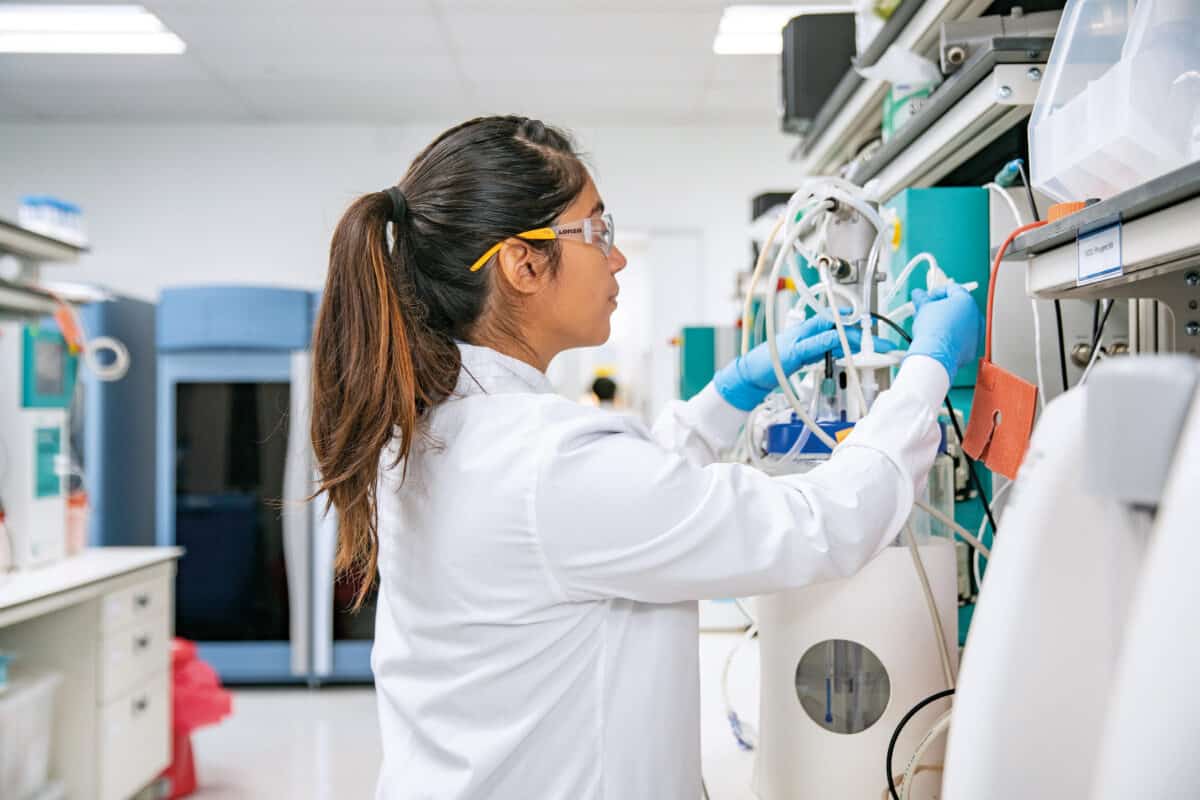
Recombinant protein expression can be achieved using several different formats, including transient processes, stable pools and clonal cell lines. Transient and stable pool processes are generally used for discovery through early-stage development to enable rapid production and screening of large numbers of protein candidates, while stable clonal cell lines are used for GMP clinical and commercial manufacturing.
Transient transfection is a relatively low-cost, rapid method for producing recombinant proteins, but generally provides fairly low titers as expression is predominately episomal and no selection for plasmid transfection is applied. By contrast, stable pools are generated following transfection by applying selection pressure so that only cells with integrated DNA can grow. The selection process adds significant time to the development timeline, but higher titers can be achieved. Regardless of the method, to inform candidate selection, recombinant proteins produced during discovery and early-phase development must have product quality attributes (PQAs), such as isoform composition, percent aggregates and post-translational modifications, comparable to material produced using a stable pool or stable cell line.
Typically, stable Chinese hamster ovary (CHO) cell pools, when created using transposase systems, support significantly higher titers than those obtained from transient transfections. However, the longer timeline associated with generating stable pools means that transient expression will usually be selected when speed is of the essence, usually resulting in lower overall titers. Besides minimizing this titer penalty when choosing a transient expression process over stable pool, a further challenge is to harmonize the suite of expression tools used across the transient and stable pool production processes to reduce overall system complexity and maintain uniformity.
An ideal solution would offer speed and also afford high titers of recombinant proteins with PQAs broadly comparable to those generated using stable processes. It would also use the same set of tools, such as host cell line, expression vector, and transposase, across all expression formats. At Lonza we have been optimizing the stable pool expression format in recent years, particularly since the introduction of a hyperactive transposase technology. We therefore sought to apply the learnings from that work to create an optimized transient expression process that merges the best attributes of both traditional transient and stable pool expression.
The process developed meets this need by offering such a novel hybrid process. It is to our knowledge the first example wherein a transposase enzyme has been used to boost titers from a transient transfection process over such a short timeframe.
Learn more by reading the white paper here.

About the Author
Peter O’Callaghan, PhD, is Head of Expression System Sciences, Biologics and Licensing, and has been at Lonza since 2011. Prior to joining Lonza he was a postdoctoral research associate at Sheffield University developing models of antibody synthesis by CHO cells, and investigating CHO cell line stability. He has a PhD in genetics from Newcastle University.